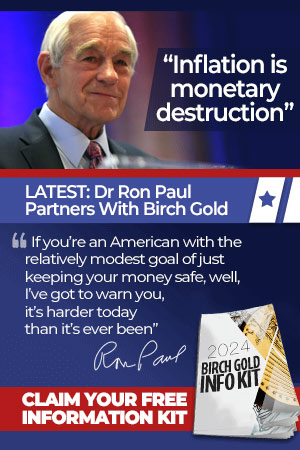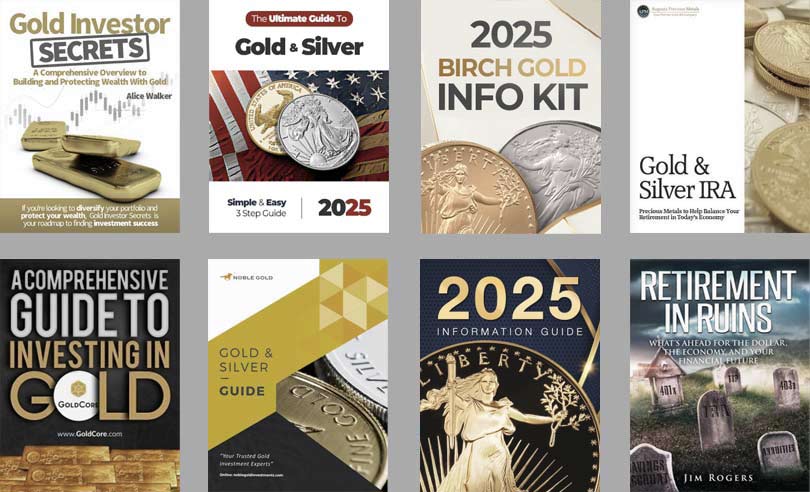What Trump’s New Tariffs Really Mean for You
 Bullion.Directory precious metals analysis 04 April, 2025
Bullion.Directory precious metals analysis 04 April, 2025
By Peter Reagan
Financial Market Strategist at Birch Gold Group
Markets hated it.
Within hours, financial assets plunged, and by Thursday morning, headlines around the world were echoing a single question: What just happened – and what happens next?
Let’s break it down.
The goals of the Liberation Day tariffs
President Trump’s tariff announcement marked a return to economic nationalism, asserting that America will no longer rely on adversarial regimes – especially China – for critical goods.
The tariffs range from 10% to 60% on key imports, with the goal of:
- Reviving American manufacturing
- Reducing foreign leverage over U.S. supply chains
- Raising government revenue without raising taxes
Trump has framed this as an economic liberation – a necessary sacrifice to restore national self-reliance. And there’s a legitimate case to be made!
The case for tariffs
There are legitimate strategic and economic reasons behind the move:
1. Reshoring American industry and manufacturing
For decades, U.S. companies have offshored manufacturing to chase lower labor costs. The result? Hollowed-out industrial towns, dependency on Chinese microchips, and serious vulnerabilities when supply chains break down. Tariffs, in theory, incentivize domestic production by making foreign goods more expensive – giving U.S. producers room to compete.
2. Additional government revenue without raising taxes
At a time when our national debt is spiraling – $34.6 trillion and climbing – tariffs represent a way to generate government income without directly raising taxes on individuals.
Unlike income taxes, tariffs fall on importers, who then choose whether to eat the cost in the form of lower profits… Or to pass the higher price on to families.
3. A diplomatic negotiating tool
Tariffs are more than a price tag – they’re leverage. By selectively targeting foreign goods, Washington can pressure other nations to change their economic and political behavior.
Tariffs are more than just economic policy; they’re a form of economic statecraft.
Now, this doesn’t always work! Notable cases are Iran and Cuba, which have both been comprehensively sanctioned for decades (45 and 65 years) without a significant improvement in our relationships with these nations.
As a negotiating tool, tariffs really do offer quite a bit of leverage!
But that leverage comes at a price…
Liberation Day blowback: What we should brace for
1. Higher prices (sometimes, much higher)
Tariffs are, in effect, taxes on imported goods. And in many sectors – especially consumer tech – there is no domestic alternative. A Bloomberg report suggests an iPhone could soon cost $2,300 (up from $1,000) if Apple fully passed tariff costs on to consumers.
Every product we buy, from electronics to sneakers, could see similar price spikes when there’s no domestic equivalent. The reason iPhones are a great example is there are no full-scale iPhone factories in the U.S. The vast majority are still assembled in China and India by Foxconn. Some individual parts are made in the U.S. but currently there’s no American factory that can make an iPhone from start to finish.
For households already feeling squeezed by the rising cost of living, this is a serious concern.
2. Escalating retaliation
China responded immediately, reinstating tariffs on U.S. agricultural and industrial goods. This tit-for-tat spiral could evolve into a full-scale trade war – one where consumers and businesses on both sides lose.
As the Bloomberg editorial board warned Friday, “That smashing sound is piggy banks around the world”.
3. Loss of confidence in (and demand for) the dollar
There’s a deeper concern beneath the headlines: the erosion of global trust in U.S. economic leadership. As the European Union’s security policy arm noted, Trump’s tariff escalation threatens to undermine international confidence in both U.S. government debt and the dollar itself.
In a world increasingly skeptical of American solvency – and looking for alternatives like gold, oil, and even digital currencies – this move could accelerate the dollar’s decline as the world’s reserve currency.
4. A recipe for recession
This isn’t quite economic orthodoxy, but still:
Higher prices + uncertainty = economic contraction
The last time the U.S. flirted with large-scale tariffs – think Smoot-Hawley in the 1930s – it deepened the Great Depression. Today’s global economy is far more interconnected, and any severe disruption to trade risks triggering a recession both here and abroad.
What happens next?
Trump has made one thing clear: “My policies will never change,” regardless of the fallout:
And while this consistency may appeal to some who take the long-term view, who see the project of revitalizing the American economy as a desirable outcome? There are countless others who either don’t believe it’s possible. Or just want to wash their hands of it…
As you might expect, corporations and analysts are already pivoting into protection mode. Capital is fleeing the U.S. at the fastest pace in history this week. Goldman Sachs noted that April 3 was “the largest 1-day notional net global selling on our record,” and that April 4th was lining up to be even worse.
Capital flight sends asset prices plummeting. And there’s no guarantee that it will return… So what should everyday Americans do?
History tells us that when government policy becomes uncertain, in times of economic disruption, the smart capital flows into hard assets. Intrinsically valuable, international forms of money like gold bullion are the world’s preferred safe-haven investments.
And the President knows this! In the official “Liberation Day” announcement, a handful of items were explicitly exempted from tariffs including gold bullion. Perhaps this was the President’s subtle hint to the wise? He knows there are bumpy roads ahead! And he wants those of us who see what’s coming to seek shelter! In times of economic upheaval, owning physical gold is the safe-haven asset of choice.
Gold doesn’t rely on trust in any government. It has no counterparty risk. And in times of economic or geopolitical upheaval, it has historically preserved purchasing power better than any paper promise.
We don’t know what comes next. But we do know that the forces now in motion – trade war escalation, inflation pressure, declining dollar dominance – make now a critical time to assess your financial exposure.
Liberation Day may very well mark a turning point in American economic history.
Whether it’s a bold act of independence or a prelude to financial instability is yet to be seen.
But if you believe in preparing before the storm hits – not after – now may be the time to diversify. With physical gold bullion.
Peter Reagan

Peter Reagan is a financial market strategist at Birch Gold Group, one of America’s leading precious metals dealers, specializing in providing gold IRAs and retirement-focused precious metals portfolios.
Peter’s in-depth analysis and commentary is published across major investment portals, news channels, popular US conservative websites and most frequently on Birch Gold Group’s own website.
This article was originally published here












 Material provided on the Bullion.Directory website is strictly for informational purposes only. The content is developed from sources believed to be providing accurate information. No information on this website is intended as investment, tax or legal advice and must not be relied upon as such. Please consult legal or tax professionals for specific information regarding your individual situation. Precious metals carry risk and investors requiring advice should always consult a properly qualified advisor. Bullion.Directory, it's staff or affiliates do not accept any liability for loss, damages, or loss of profit resulting from readers investment decisions.
Material provided on the Bullion.Directory website is strictly for informational purposes only. The content is developed from sources believed to be providing accurate information. No information on this website is intended as investment, tax or legal advice and must not be relied upon as such. Please consult legal or tax professionals for specific information regarding your individual situation. Precious metals carry risk and investors requiring advice should always consult a properly qualified advisor. Bullion.Directory, it's staff or affiliates do not accept any liability for loss, damages, or loss of profit resulting from readers investment decisions.

Leave a Reply